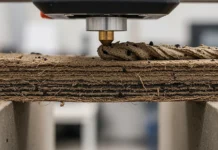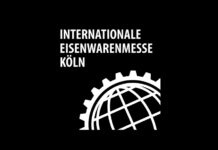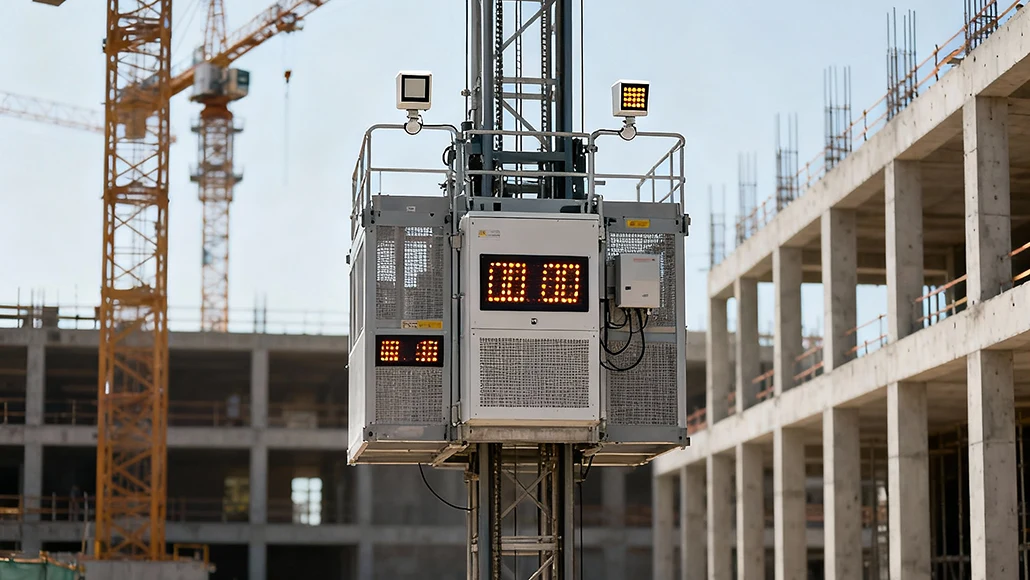Remote Monitoring and Maintenance for Construction Lifts
The construction industry embraces digital transformation as remote monitoring construction lifts technologies revolutionize equipment management and maintenance strategies. These sophisticated systems enable continuous oversight of lifting equipment performance, health status, and operational parameters from centralized locations, fundamentally changing how organizations approach asset management. The shift from reactive maintenance approaches to proactive, data-driven strategies delivers substantial improvements in equipment reliability, operational safety, and total cost of ownership.
The Foundation of Remote Monitoring Technology
Traditional construction lift maintenance followed schedule-based or reactive patterns. Technicians performed inspections at predetermined intervals regardless of actual equipment condition, or responded to breakdowns after failures occurred. These approaches generated inefficiencies—unnecessary maintenance consumed resources when equipment remained healthy, while unexpected failures disrupted construction schedules and generated emergency repair costs. Remote monitoring construction lifts addresses both problems through continuous condition assessment that triggers interventions precisely when needed.
The technical architecture supporting remote monitoring involves IoT sensors installed throughout lifting equipment. These sensors measure diverse parameters including motor temperature, vibration levels, hydraulic pressure, brake wear, cable condition, and operational cycles. Data streams from multiple sensors flow to edge computing devices or directly to cloud platforms where analytical systems process information in real time. The resulting insights inform maintenance decisions, optimize operations, and prevent failures before they disrupt construction activities.
Communication infrastructure varies based on deployment environments and connectivity availability. Construction sites with reliable cellular coverage typically use 4G or 5G networks for data transmission. Remote locations may employ satellite communication systems that ensure connectivity regardless of terrestrial network availability. Some implementations use local area networks when internet access remains restricted for security or infrastructure reasons. The communication architecture selection balances reliability requirements, data volume considerations, and cost constraints while ensuring continuous monitoring capability.
Predictive Maintenance Capabilities
The transformative potential of remote monitoring construction lifts manifests most clearly in predictive maintenance applications. By continuously analyzing operational data, these systems identify patterns indicating developing problems long before failures occur. Algorithms trained on historical failure data recognize subtle changes—gradual temperature increases, evolving vibration signatures, or declining performance metrics—that presage component degradation. This early warning capability enables maintenance scheduling during planned downtime rather than emergency response after breakdowns.
Consider motor bearing wear, a common failure mode in construction hoists. As bearings degrade, vibration patterns change in characteristic ways. Remote monitoring systems detect these signatures and alert maintenance teams that bearing replacement will soon become necessary. Technicians schedule the intervention during evening hours or weekends when equipment sits idle, avoiding the production disruptions and rush charges associated with emergency repairs during active construction shifts.
Similarly, brake system monitoring tracks wear rates and predicts when replacement becomes necessary. Rather than replacing brakes on fixed schedules—potentially prematurely when wear remains minimal or dangerously late if deterioration accelerates—predictive systems recommend replacement based on actual condition. This approach optimizes maintenance timing while ensuring safety margins remain adequate throughout operation.
Cable condition monitoring represents another critical application. Wire rope deterioration from fatigue, corrosion, or mechanical damage can occur gradually, escaping detection during visual inspections until significant degradation develops. Sensors that continuously monitor cable condition identify problems early, allowing replacement before safety becomes compromised. Some advanced systems use magnetic flux leakage detection that identifies internal wire breaks invisible to visual examination, providing comprehensive cable health assessment.
Real-Time Operational Visibility
Beyond maintenance applications, remote monitoring construction lifts delivers real-time operational visibility valuable for project management and resource optimization. Supervisors access dashboards displaying equipment status, utilization metrics, and performance indicators from office locations or mobile devices. This transparency enables informed decision-making about equipment deployment, identifies underutilized assets that might support other projects, and provides objective data for operational planning.
Lift cycle counting tracks how frequently equipment operates and the duration of active periods versus idle time. This information reveals utilization patterns that inform scheduling optimization and equipment acquisition decisions. When data shows consistent high utilization approaching capacity limits, managers can justify additional equipment investment. Conversely, consistently low utilization suggests excess capacity or opportunities to consolidate operations and potentially reduce fleet size.
Load monitoring provides insights into whether equipment operates near rated capacities or typically handles lighter loads. This information influences future equipment selection decisions—persistent light loading suggests smaller equipment might suffice for subsequent projects, while consistent heavy loading indicates current selections remain appropriate. The data also supports safety management by identifying potential overload attempts that warrant investigation and corrective action.
Geographic positioning systems integrated with remote monitoring construction lifts enable location tracking across large job sites or when equipment moves between projects. Fleet managers know precisely where assets reside, eliminating time wasted searching for equipment and preventing loss through theft or unauthorized relocation. Geofencing capabilities trigger alerts when equipment exits designated areas, supporting security management and preventing unauthorized usage.
Enhanced Safety Management
Safety management capabilities represent compelling advantages of remote monitoring construction lifts implementation. Continuous oversight identifies unsafe operating conditions before accidents occur, while comprehensive data recording supports incident investigation and prevention strategy development. The combination creates safer construction environments and reduces liability exposure.
Overload detection systems continuously monitor lift weights against rated capacities, triggering warnings when loads approach or exceed safe limits. This real-time protection prevents the structural failures and tipping incidents that cause many serious lifting accidents. Automated load monitoring proves more reliable than operator judgment, particularly during complex multi-point lifts where weight distribution assessment challenges human evaluation.
Environmental condition monitoring tracks wind speed, temperature extremes, and other factors that influence safe operation. When conditions exceed safe operating parameters, systems alert operators and can automatically restrict or prevent operations until conditions improve. This capability proves particularly valuable for tower cranes and outdoor lifts where weather significantly impacts safety margins.
Door interlock and safety gate monitoring ensures proper protective device function before allowing equipment movement. Remote monitoring construction lifts verifies that safety mechanisms operate correctly, providing assurance that critical safeguards remain effective throughout equipment lifespans. Malfunctions trigger immediate alerts that prevent operation until repairs restore proper function.
Emergency call integration enables direct communication from lift positions to monitoring centers. When incidents occur or assistance becomes necessary, personnel activate emergency call functions that alert response teams while providing precise location information. This capability accelerates emergency response and supports coordination during evolving situations.
Comprehensive Data Analytics and Reporting
The data streams generated by remote monitoring construction lifts enable sophisticated analytics that reveal operational patterns, optimization opportunities, and performance trends. Advanced platforms employ machine learning algorithms that identify correlations human analysts might miss, generating insights that drive continuous operational improvement.
Historical trend analysis compares current performance against past baselines, identifying gradual degradation that might escape notice during day-to-day operations. Performance metrics tracked over months or years reveal whether equipment maintains design specifications or experiences declining capability requiring attention. This longitudinal perspective supports informed decisions about major overhauls versus replacement as equipment ages.
Comparative analysis across equipment fleets identifies outliers—units experiencing higher maintenance requirements, more frequent problems, or unusual operating patterns. Investigation of these outliers often reveals specific issues (operator practices, environmental exposures, or manufacturing variations) that, when addressed, improve fleet-wide performance. Similarly, identifying consistently high-performing units provides models for best practices that can be extended across operations.
Compliance documentation benefits substantially from remote monitoring construction lifts capabilities. Systems automatically log inspections, maintenance activities, operational parameters, and safety system functions, creating comprehensive records that demonstrate regulatory compliance. This documentation proves invaluable during audits, incident investigations, or regulatory reviews where thorough record-keeping influences outcomes.
Integration with Maintenance Management Systems
Maximum value from remote monitoring construction lifts emerges when systems integrate with broader maintenance management platforms. This integration enables automated work order generation based on monitoring insights, streamlines maintenance scheduling, and ensures comprehensive asset lifecycle management. The connections between monitoring, maintenance, and business systems create unified operational frameworks that optimize equipment performance throughout ownership periods.
When predictive algorithms identify developing maintenance needs, integrated systems automatically generate work orders specifying required actions, necessary parts, and appropriate technician skills. Maintenance managers review and approve these recommendations, then schedule interventions coordinated with project timelines and equipment availability. This automation eliminates manual tracking, ensures timely maintenance, and prevents oversights that allow minor issues to escalate into major problems.
Spare parts inventory management benefits from predictive maintenance insights. When systems forecast component replacements weeks or months in advance, procurement teams can order parts through standard channels without incurring express shipping premiums. Inventory levels can be optimized around actual consumption patterns rather than theoretical replacement schedules, reducing carrying costs while ensuring critical components remain available when needed.
Maintenance history integration provides technicians comprehensive context when addressing equipment problems. Rather than investigating issues blind to recent activities or recurring patterns, technicians access complete maintenance records, operational data, and monitoring alerts that inform diagnostic processes. This information accelerates problem resolution while preventing unnecessary work on systems that recently received attention.
Implementation Strategies and Change Management
Successful remote monitoring construction lifts implementation requires systematic approaches addressing technical, organizational, and cultural dimensions. Equipment retrofitting or new installation selection must consider monitoring capabilities as essential rather than optional features. The infrastructure supporting data transmission, storage, and analysis warrants investment proportional to expected benefits.
Personnel training ensures that maintenance teams, project managers, and operators understand monitoring capabilities and how to leverage available information effectively. Technicians need training in interpreting analytical outputs and translating monitoring insights into appropriate maintenance actions. Managers require education about dashboard utilization and decision support capabilities. Operators should understand how monitoring supports rather than supplants their roles, addressing concerns that technology threatens employment.
Data governance policies establish who accesses various information categories, how data security is maintained, and what privacy considerations apply. Some monitoring data may contain competitively sensitive information about project schedules, equipment capabilities, or operational practices. Appropriate access controls and confidentiality protections prevent unauthorized disclosure while ensuring necessary information reaches decision-makers.
Performance metrics should be established that demonstrate monitoring value and guide continuous improvement. Typical metrics include equipment uptime percentages, emergency maintenance incident frequency, planned versus unplanned maintenance ratios, and maintenance cost per operational hour. Tracking these indicators quantifies monitoring system contributions and identifies areas warranting additional attention or system refinement.
Future Technological Evolution
The capabilities of remote monitoring construction lifts will continue expanding as supporting technologies advance. Artificial intelligence applications will become more sophisticated, identifying increasingly subtle patterns and providing more accurate predictions. Edge computing developments will enable more processing at equipment locations, reducing communication bandwidth requirements and enabling faster local responses to developing situations.
Augmented reality integration may provide maintenance technicians enhanced guidance during repair activities. Smart glasses could overlay monitoring data, repair instructions, and component identification information on technicians’ fields of view, accelerating repairs and reducing errors. This capability proves particularly valuable when addressing unfamiliar equipment or complex problems requiring precise procedures.
Blockchain technology might enable secure, tamper-proof maintenance records valuable for equipment resale, regulatory compliance, and liability management. Immutable records of maintenance activities, operational history, and monitoring data would provide verifiable equipment condition documentation supporting informed purchasing decisions and fair value determination.
The convergence of remote monitoring construction lifts with other construction technologies—building information modeling, project management systems, and enterprise resource planning platforms—will create integrated ecosystems where equipment data informs broader project decisions, resource allocation reflects actual equipment capabilities and availability, and maintenance planning coordinates with construction schedules seamlessly.
As remote monitoring construction lifts technologies mature and adoption expands, these systems will transition from competitive differentiators to baseline expectations, establishing continuous equipment oversight as fundamental to professional construction operations rather than innovative practice warranting special recognition.































